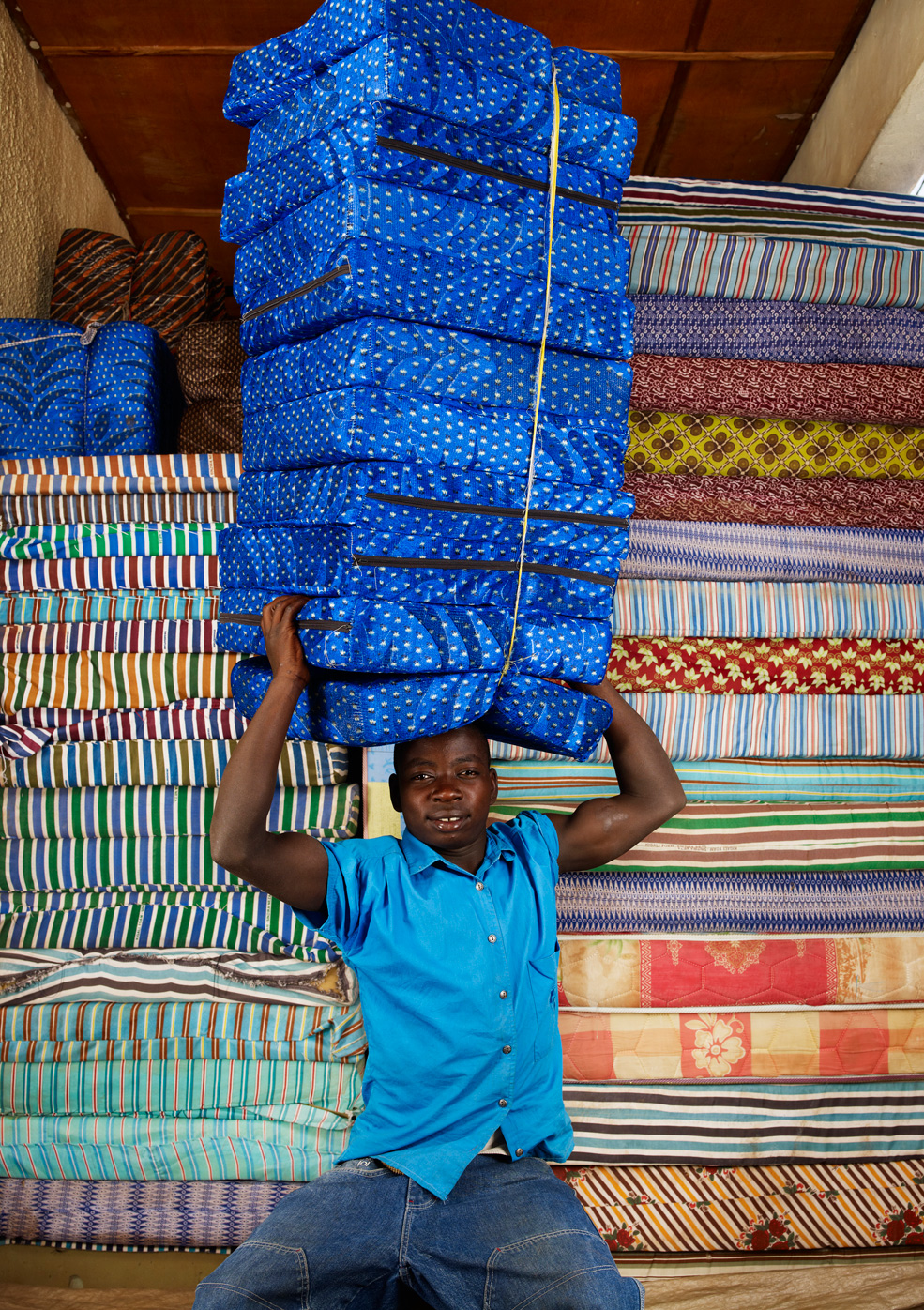These exquisite portraits capture life's literal and metaphorical burdens
A photographer finds art in an ancient tradition


"How much can you carry?"
It might sound like an odd question, but the answer can be a source of pride.
In 2012, Paris-based photographer Floriane de Lassée traveled the world — from Bolivia and Brazil, Rwanda and Nepal, Indonesia to Japan — in search of a new project.
The Week
Escape your echo chamber. Get the facts behind the news, plus analysis from multiple perspectives.

Sign up for The Week's Free Newsletters
From our morning news briefing to a weekly Good News Newsletter, get the best of The Week delivered directly to your inbox.
From our morning news briefing to a weekly Good News Newsletter, get the best of The Week delivered directly to your inbox.
On these journeys, Lassée began to notice men, women, and children carrying stacks of goods on their heads as they walked the dirt roads of their rural towns. Inspired by these exquisitely balanced load bearers, she eventually posed that question to locals, turning the result into a photographic series and book called How Much Can You Carry?


Lassée scouted locations by the road, set up a cloth backdrop, and encouraged people to stop. The children were quick to join in and eventually their excitement warmed their older, more reticent family members who opened up to the photographer and posed for the camera.
"I discovered that everybody has a weight to carry," Lassée said in an email. "Sometimes it is a physical heaviness, sometimes it could be a social weight, a family weight, weight of the heritage, a burden of knowledge and education, or a heaviness of tradition."


Lassée decided to explore this theme in her photographs, which is why not all of the loads her subjects carry are literal ones. In some locales, she set up a pulley system that would keep her models comfortable, while holding their piles in place, so she could capture the moment.
A free daily email with the biggest news stories of the day – and the best features from TheWeek.com
But the ropes also allowed the photographer to convert the metaphor into the physical. Lassée would ask her subjects what they carried and she would build mountainous sculptures based on their answers. Hoisted into the air, the cartoonish piles appear to sit precariously above the models' serious or smiling faces.
A young girl named Putrie in Indonesia, for example, does not literally carry an endless pile of bones atop her petite head. The horns were actually a part of house that Lassée hid with fabric. As the giggling girl poses beneath the structure, her weight becomes symbolic of the generations before her, of the importance and pressure of ancestry.

A girl named Anga from Indonesia is one of Lassée's favorites. At first glance, the petite figure appears nearly crushed by the mountain of baskets above her, but on closer look, her gaze is focused, strong, and conveys more about the responsibilities she carries than the pile itself.

People have carried items on their heads since ancient times and Lassée's beautiful, whimsical portraits pay homage to this tradition and the cultures that continue it today. The colorful piles, meanwhile, tell their own tales about local economies, and the people and things that make them run.
No matter the country, person, or goods captured in these photographs, the question that inspired them is worth asking.
"How much can you carry?"



**For more of Floriane de Lassée's work go to her website.**
Lauren Hansen produces The Week’s podcasts and videos and edits the photo blog, Captured. She also manages the production of the magazine's iPad app. A graduate of Kenyon College and Northwestern University, she previously worked at the BBC and Frontline. She knows a thing or two about pretty pictures and cute puppies, both of which she tweets about @mylaurenhansen.
-
 A lemon-shaped exoplanet is squeezing what we know about planet formation
A lemon-shaped exoplanet is squeezing what we know about planet formationUnder the radar It may be made from a former star
-
 Political cartoons for January 4
Political cartoons for January 4Cartoons Sunday's political cartoons include a resolution to learn a new language, and new names in Hades and on battleships
-
 The ultimate films of 2025 by genre
The ultimate films of 2025 by genreThe Week Recommends From comedies to thrillers, documentaries to animations, 2025 featured some unforgettable film moments
